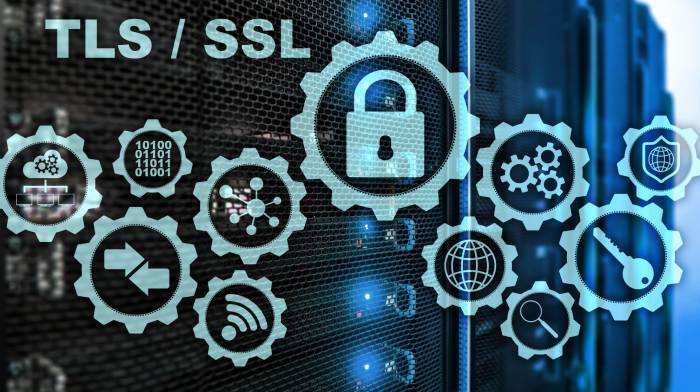The Simple Mail Transfer Protocol (SMTP) is the foundational email protocol responsible for the reliable delivery of outbound email across the internet. Pioneered by Ray Tomlinson, SMTP governs the communication between email clients and email servers—or between servers themselves—in the process known as the SMTP session. In this session, the SMTP client initiates a connection to an SMTP daemon running on the outgoing mail server, typically on an SMTP port such as port 25, port 587, or port 465.
During the SMTP handshake, a series of SMTP commands and responses facilitate the mail relay, allowing the public to send emails through Mail Transfer Agents (MTAs) like Microsoft Exchange Server, Postfix, Sendmail, or Exim. The SMTP envelope encapsulates the message, and SMTP authentication often ensures that only authorized users access the email gateway to send messages, which is crucial for preventing email spoofing. Security is further enforced by SMTP encryption protocols such as TLS or SSL.
Effective SMTP configuration is essential not only for the successful delivery of emails but also to minimize issues like SMTP timeouts, SMTP error codes, or outright rejection by recipient servers. SMTP logs can help diagnose such problems by detailing server responses and error messages during each transactional step.
This protocol operates in tandem with other email protocols like POP3 and IMAP servers, which handle inbound messages, allowing email clients to synchronize and retrieve mails. However, optimizing the SMTP server settings on the outgoing mail server is fundamental to enhancing email deliverability and overall email security practices.
What Is an SMTP Server Address?
An SMTP server address is the server hostname or IP address designated as the outgoing mail server responsible for routing emails to their destination via the SMTP protocol. This server acts as the intermediary “mail relay,” receiving outbound email from an email client or an email gateway, and forwarding it using the configured SMTP relay infrastructure.
Common SMTP server addresses often resemble fully qualified domain names (FQDNs) such as `smtp.example.com` or vendor-specific hostnames like `smtp.gmail.com` for Google Workspace Gmail SMTP server or `smtp.mail.yahoo.com` for Yahoo Mail SMTP. The address is accompanied by SMTP port information, the choice of which can influence performance and security:
- Port 25: traditionally used for SMTP relay but often blocked by ISP for outbound email due to spam concerns.
- Port 587: designated for email submission with mandatory authentication and TLS encryption.
- Port 465: originally assigned for SMTPS (SMTP over SSL) but now less standard.
Correctly specifying the SMTP server address in any email client or email server setup—be it Microsoft Outlook using Microsoft Exchange, SmarterMail, Axigen Mail Server, or hMailServer—is fundamental for successful email sending.
How Incorrect SMTP Server Settings Impact Email Deliverability
Misconfigured SMTP server settings can severely disrupt email delivery, resulting in lost, delayed, or rejected messages. Understanding how these issues occur is crucial to maintaining reliable communication and ensuring your messages reach their intended recipients.
1.Common Causes of SMTP Delivery Failures
Incorrect Server Hostname or Port Configuration
When the SMTP hostname or port number is incorrect, the client cannot establish a proper SMTP handshake with the mail server. This failure often results in connection timeouts or refusals, generating SMTP error responses such as 421 SMTP Timeout or 554 Transaction Failed.
Authentication Errors and Security Failures
Improper SMTP authentication setup undermines secure connections. Authentication mismatches or missing credentials can trigger blocks from outbound email filters or anti-spam gateways like Cisco Email Security or MailEnable appliances, preventing emails from being sent successfully.
2.Effects on Email Authentication Protocols
SPF, DKIM, and DMARC Validation Issues
Using an incorrect or outdated SMTP server address can disrupt essential authentication mechanisms such as SPF, DKIM, and DMARC. When these protocols fail, receiving servers may flag your messages as suspicious, reducing trust and increasing the likelihood of being marked as spam.
Reverse DNS Configuration Mismatches
A reverse DNS (rDNS) mismatch between the sending IP and the domain name significantly affects sender reputation. Recipient Mail Transfer Agents (MTAs) interpret such mismatches as potential spoofing attempts, which further deteriorates deliverability rates.
3.Importance of Proper Encryption and Port Selection
STARTTLS vs. SSL/TLS Configuration
Choosing the right encryption method is vital for secure message transmission. STARTTLS on port 587 and SSL/TLS on port 465 are standard options. Misconfiguration of these can prevent proper encryption negotiation, leading to server responses like “550 Relay Not Permitted” or handshake failures logged in SMTP error reports.
4.Best Practices for Reliable Email Delivery
Leverage Reputable Email Platforms
Reliable sending platforms such as Amazon Simple Email Service (SES), Mailgun, and SendGrid depend on precise SMTP configurations. Ensuring correct hostname entries, authentication details, and encryption protocols will help maintain high deliverability and compliance with modern email security standards.
Monitor SMTP Logs and Test Regularly
Regularly reviewing SMTP server logs and conducting test deliveries helps detect misconfigurations early. Proactive monitoring allows administrators to correct settings before they lead to widespread delivery issues or affect sender reputation.
Common SMTP Server Address Configurations and Their Uses
SMTP server configurations vary widely depending on the email client, server software, and service provider in use. Below are some common configurations:
SMTP Server Address Examples
- Google Workspace Gmail SMTP server: smtp.gmail.com, typically using port 587 with TLS.
- Outlook.com SMTP server: smtp.office365.com (Microsoft Exchange Online), port 587 with STARTTLS.
- Yahoo Mail SMTP: smtp.mail.yahoo.com, port 465 with SSL.
- Zoho Mail: smtp.zoho.com, ports 587 or 465.
- Postfix and Sendmail: On Linux/Unix, postmasters configure server hostnames to match DNS MX records for seamless mail relay.
- IBM Lotus Domino: uses configurable SMTP settings for broad enterprise email delivery.
Server Software Specifics
Some MTAs like Postfix and Sendmail include options to bind SMTP daemons to specific hostnames or IP addresses and to enforce strict SMTP authentication protocols to prevent unauthorized mail relaying. These servers integrate with DNS MX records and reverse DNS lookups to authenticate their identity to recipient mail servers.
Cloud email gateways like Cisco Email Security often require precise SMTP configuration, including specific hostnames and ports, combined with email filtering policies to prevent spam and phishing.
When using SMTP as a relay for bulk scanning solutions or marketing platforms, the SMTP relay’s address and port must comply with the vendor’s requirements, such as those imposed by Mailgun or Amazon SES.
How to Find the Correct SMTP Server Address for Your Email Provider
Identifying the correct SMTP server address and corresponding settings is essential for ensuring smooth and secure email delivery. The process generally involves consulting your email provider’s documentation, using automatic configuration tools, and verifying DNS records to avoid SMTP errors and delivery issues.
Official Sources for SMTP Server Settings
1. Email Provider Documentation
Reputable email services such as Google Workspace, Microsoft Exchange, and Zoho Mail maintain official support pages that list SMTP configuration details, including server hostnames, port numbers, and security protocols. Reviewing these resources ensures accuracy and compatibility with your email environment.
2. Administrative Portals
For enterprise or managed accounts, the administrative portal often contains preconfigured SMTP settings, authentication credentials, and TLS/SSL requirements. Accessing these portals helps avoid misconfiguration or security vulnerabilities.
Using Email Client Auto-Configuration
1. Automated Detection
Modern email clients like Microsoft Outlook, Apple Mail, and Mozilla Thunderbird feature auto-configuration mechanisms that automatically detect the correct SMTP settings. These tools query DNS MX records or use standard service discovery protocols to identify the correct SMTP host and encryption options.
2. Manual Verification
Even when auto-configuration is successful, manually confirming settings such as port numbers (e.g., 465 for SSL, 587 for TLS) and authentication modes helps maintain compliance with organizational email policies.
Leveraging DNS and Authentication Records
1. SPF, DKIM, and DMARC Integration
DNS records like SPF, DKIM, and DMARC are directly tied to your provider’s SMTP infrastructure. Proper configuration ensures that outgoing emails are authenticated, reducing the risk of email spoofing and improving deliverability. DNS records like SPF, DKIM, and DMARC are directly tied to your provider’s SMTP infrastructure. Proper configuration ensures that outgoing emails are authenticated, reducing the risk of email spoofing and improving deliverability. Because SPF, DKIM, and DMARC are pillars of deliverability infrastructure, any mismatch here erodes trust.
2. Verifying MX and Reverse DNS Entries
Advanced administrators managing MTAs (Mail Transfer Agents) such as Postfix, Exim, or Sendmail can examine SMTP logs, DNS MX lookups, and reverse DNS entries to confirm the correct SMTP hostname and prevent session disruptions.
Third-Party SMTP Relay Services
1. Popular SMTP Relays
Businesses that rely on third-party SMTP relay services such as SendGrid, Mailgun, or Amazon SES can access SMTP configuration details—including server addresses, authentication credentials, and port numbers—directly from their account dashboards.
2. Configuration Benefits
Using these platforms simplifies scalability, improves deliverability rates, and offers enhanced tracking features for outbound emails.
Ensuring Email Security and Compliance
1. Enforce Encryption and Authentication
Always enable TLS encryption and require SMTP authentication to protect outgoing messages. Aligning your configuration with SPF, DKIM, and DMARC policies ensures compliance with global email security standards.
2. Regular Audits and Monitoring
Performing periodic audits of SMTP configurations and reviewing logs can identify misconfigurations early and safeguard your email reputation from blacklisting or spoofing attempts.
Step-by-Step Guide to Setting the SMTP Server Address in Different Email Clients
Configuring the SMTP server address correctly in an email client is critical for successful email delivery through the Simple Mail Transfer Protocol. The SMTP server, often referred to as the outgoing mail server, facilitates sending emails by managing the SMTP session and handling SMTP commands.
Step 1: Identify Your SMTP Server Details
Before configuring, obtain the server hostname of your email provider’s SMTP server. For example, Google Workspace Gmail SMTP uses `smtp.gmail.com`, Outlook.com SMTP server uses `smtp.office365.com`, and Zoho Mail’s SMTP server is `smtp.zoho.com`. In self-hosted environments, this might be a Postfix, Sendmail, or Microsoft Exchange Server configured mail relay. Ensure you know the correct SMTP port – commonly port 587 (with TLS encryption), port 465 (with SSL), or occasionally port 25 (standard, but often blocked by ISPs due to spam concerns).
Step 2: Open Your Email Client’s SMTP Settings
Navigate to the outbox or sending settings within your email client. In clients such as Microsoft Outlook, Thunderbird, or hMailServer, these options are typically found under account settings > outgoing mail server (SMTP).
Step 3: Enter SMTP Server Information
Input the SMTP server hostname, select the appropriate SMTP port, and specify the security protocol—TLS or SSL. Make sure SMTP authentication is enabled, as it prevents unauthorized mail relay and helps with email filtering against spam.
Step 4: Provide SMTP Authentication Credentials
Enter your email address and password or an app-specific password if two-factor authentication is enabled. This step authenticates the SMTP client to the mail server, initiating a secure SMTP handshake during the SMTP session.
Step 5: Test the Configuration
Send a test email to verify successful email sending and observe if any SMTP error codes like “SMTP timeout” or relay errors occur. Review SMTP logs for diagnostic clues if delivery issues arise.
Troubleshooting SMTP Server Address Issues That Affect Deliverability
Common obstacles in SMTP configuration impact email delivery and can manifest as failure notices or bounced messages. Below are key troubleshooting tips:
- Incorrect SMTP Server Hostname or Port: Using the wrong server hostname or SMTP port often leads to SMTP server response errors. For example, using port 25 on networks that block it can cause SMTP timeout issues.
- Authentication Failures: Incorrect SMTP authentication details will cause mail relay rejection. Ensure username and password match the SMTP client’s credentials.
- Absence of TLS/SSL Encryption: Many email servers require SMTP encryption using TLS or SSL. Without proper encryption, some SMTP daemons refuse the SMTP session.
DNS MX Record and Reverse DNS Issues: Improper DNS MX records or reverse DNS - lookups cause receiving servers to classify outbound email as spam or reject it outright.
- Email Spoofing and Filtering Problems: Lack of proper SPF record, DKIM, and DMARC configuration can trigger email filtering policies on receiving SMTP servers, blocking your emails.
- SMTP Relay Restrictions: Some MTAs like Microsoft Exchange and Postfix restrict SMTP relay to certain IP addresses or authentication modes to prevent spam.
Review SMTP logs generated by your Mail Transfer Agent (MTA) such as Exim or qmail to identify specific SMTP error codes and resolve email delivery issues effectively.
Best Practices for Maintaining Optimal SMTP Server Settings
To ensure smooth outbound email delivery and prevent blacklisting or SMTP errors, adhere to the following best practices:
- Use Secure SMTP Ports: Prefer port 587 with TLS for submission as recommended by RFC standards, or port 465 with SSL if supported.
- Enable SMTP Authentication: Always configure authenticated SMTP sessions to prevent unauthorized SMTP relay.
- Implement SPF, DKIM, and DMARC: These email authentication protocols protect your domain from email spoofing and improve inbox placement by confirming sender legitimacy.
- Review DNS MX Records and Reverse DNS: Make sure MX records are accurate and reverse DNS entries match your SMTP server hostname.
- Monitor SMTP Logs and Server Responses: Utilize logs from Postfix, Sendmail, or Microsoft Exchange to detect anomalies or SMTP error codes.
- Regularly Update SMTP Daemon Software: Keep MTA software up to date to include security patches and support latest email protocols.
- Limit Outbound Email Rates: Prevent SMTP timeouts and spam flags by throttling email sending, especially in bulk mail scenarios using services like Amazon SES, Mailgun, or SendGrid.
- Use Reliable Email Gateways and Email Clients: Configure Microsoft Outlook, Zoho Mail, or IBM Lotus Domino properly to interface correctly with SMTP servers.
The Role of Authentication and Encryption in SMTP Configuration
SMTP authentication and encryption are foundational in secure email sending and robust SMTP configuration:
- SMTP Authentication: This process, often requiring username and password, confirms the sender’s identity at the SMTP server during the SMTP handshake. It stops unauthorized entities from using your SMTP server for mail relay, a common exploit in email spoofing.
- SMTP Encryption (TLS/SSL): Transport Layer Security (TLS) and Secure Sockets Layer (SSL) protocols encrypt the SMTP session, securing sensitive data such as login credentials and email content. TLS typically operates on port 587, while SSL is often associated with port 465. Using encryption aligns with modern email protocol standards and enhances protection against interception.
Services like Microsoft Exchange Server, SmarterMail, and Axigen Mail Server support advanced SMTP encryption and authentication methods, which are vital to comply with enterprise security policies. SMTP encryption also works hand-in-hand with SPF, DKIM, and DMARC to ensure that email passes robust authentication checks at the recipient’s end.
Advanced Tips to Maximize Email Deliverability Through Proper SMTP Management
Maximizing email deliverability entails well-tuned SMTP configuration and strategic management of your email infrastructure:
- Optimize SMTP Envelope and Email Headers: Properly format the SMTP envelope sender and message headers to align with DNS MX records and SPF policies.
- Implement Comprehensive Email Filtering: Deploy inbound and outbound email filtering on platforms such as Cisco Email Security appliance or MailEnable to detect spam or malicious content early.
- Leverage Reputable SMTP Clients and MTAs: Use proven software like Postfix, Sendmail, or Microsoft Exchange to manage SMTP sessions reliably and maintain logs for compliance audits.
- Utilize SMTP Relays from Trusted Email Service Providers: Relaying outbound email through cloud-based email gateways such as Amazon SES, Mailgun, or SendGrid improves reputation and deliverability metrics by leveraging their optimized IP infrastructure.
- Regularly Monitor SMTP Error Codes and Server Responses: Use SMTP diagnostics, including error codes and log analysis, to pre-emptively resolve issues like SMTP timeout or relay restrictions.
- Deploy Reverse DNS Checks and Alignment: Align PTR records of your email server with the SMTP hostname to avoid spam folders.
- Implement Rate Limiting and Queue Management: To avoid SMTP daemon overload and comply with recipient provider policies, manage outbound email queues prudently.
- Educate End Users on Correct SMTP Settings: Empower users to configure SMTP settings correctly on email clients like Thunderbird, Outlook, or mobile mail apps to prevent common misconfigurations.
- Maintain Updated SSL/TLS Certificates: Monitor expiration dates and renew SSL/TLS certificates timely to avoid SMTP encryption failures.
By combining these SMTP server settings best practices with rigorous email authentication protocols and leveraging robust email clients such as IBM Lotus Domino or services like Yahoo Mail SMTP, organizations can achieve optimal outbound email reliability and deliverability.
FAQs
What is the difference between SMTP, POP3, and IMAP servers?
SMTP is the protocol used for sending email (outgoing mail server), whereas POP3 and IMAP servers handle incoming mail. POP3 downloads emails to local devices, while IMAP synchronizes emails across multiple clients.
Which SMTP port should I use for sending email securely?
Port 587 with TLS encryption is the standard port for secure email submission. Port 465 with SSL is also commonly used but considered deprecated by some standards. Port 25 is usually reserved for mail relay between servers and often blocked for client submission.
How does SMTP authentication improve email security?
SMTP authentication requires users to prove their identity using usernames and passwords before sending emails through an SMTP server. This prevents unauthorized SMTP relay, reducing spam and email spoofing risks.
What are SPF, DKIM, and DMARC, and why are they important?
These are email authentication protocols that verify the legitimacy of the sender’s domain, helping to prevent email spoofing and improve email filtering, which in turn improves email deliverability.
Can incorrect SMTP server settings cause email delivery failure?
Yes, inaccuracies in SMTP server hostname, incompatible SMTP ports, lack of authentication, or outdated encryption protocols can trigger SMTP error codes and prevent successful email sending.
How do I check if my SMTP server is blocking outbound email?
Review SMTP logs generated by your MTA (Postfix, Sendmail, etc.) for error codes indicating blocked SMTP relay or SMTP timeout. Monitoring tools and server response codes also help diagnose blockages.
Key Takeaways
- Correct SMTP server address, port, and encryption settings are essential for successful email sending via the Simple Mail Transfer Protocol.
- Enabling SMTP authentication and implementing SPF, DKIM, and DMARC protects against spoofing and enhances email deliverability.
- Frequent review and monitoring of SMTP logs and error codes help diagnose and fix email delivery issues proactively.
- Using reputable MTAs like Postfix or Microsoft Exchange Server and reputable email gateways such as Amazon SES or Mailgun improves sending reliability.
- Advanced SMTP management practices, including proper envelope configuration and rate limiting, maximize outbound email effectiveness and server health.






